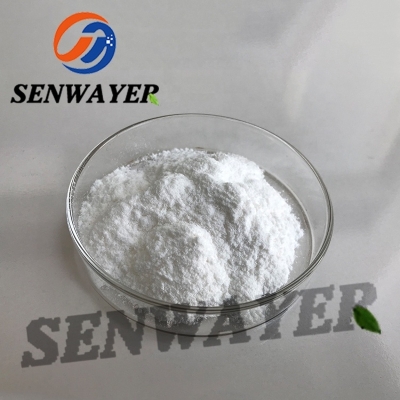Overseas M & A has shrunk by 46%, and IPO is becoming rational! 7000 word long article analyzes the changes of IPO and M & A in China's pharmaceutical industry in 2018!
-
Last Update: 2019-04-08
-
Source: Internet
-
Author: User
Search more information of high quality chemicals, good prices and reliable suppliers, visit
www.echemi.com
For China's biopharmaceutical and medical industry, the past 2018 has been a turbulent year In the first half of the year, the market was booming: biotech and digital healthcare companies completed multiple rounds of amazing financing, and the share price of healthcare sector soared by more than 50% But in the second half of the year, the healthcare sector fell sharply The report of China Securities Index Co., Ltd shows that the annual return rate of health care sector in 2018 has dropped by more than 20% due to the near depletion of working capital The overconfidence of investors was once the main tone of investment in the pharmaceutical industry in 2018 However, the ensuing trade frictions between China and the United States, China's macroeconomic situation, and the latest 4 + 7 countries' purchasing policies with volume all confirm that the previous prediction is too optimistic from different levels This article will review the ups and downs of the investment market of China's medical and health industry in 2018 through the analysis of the IPO and major M & a transaction trends in China's medical and health industry in 2018 Unprofitable biological companies in Hong Kong have a bad start What about the technology innovation board? In April 2018, the Hong Kong Stock Exchange (hereinafter referred to as "HKEx") carried out the largest listing system reform in 25 years: from April 30, dual equity companies and unprofitable biotechnology companies were allowed to list in Hong Kong The Hong Kong Stock Exchange's move aims to attract China's emerging biotechnology and digital companies from Wall Street to Hong Kong, so as to reverse its inferior position in IPO compared with the two world's leading exchanges, New York and Shanghai Sure enough, in 2018, Hong Kong once again became the first choice for IPO of global companies The total amount of IPO transactions in the whole year reached 36.6 billion US dollars, with a year-on-year growth rate of more than 120% According to GBI data, seven of the IPOs of top 11, a Chinese healthcare company, were in Hong Kong last year, five of which are unprofitable biotechnology companies In addition, China's digital medical innovation momentum is also strong Two of the top 10 digital medical companies are digital medical companies, including Ping an good doctors who raised $1.12 billion in Hong Kong On August 1, 2018, Geli biology launched the IPO of unprofitable biotechnology companies in Hong Kong, followed by Baiji Shenzhou, Hualing, Xinda and Junshi Investors were initially optimistic about the valuations of the five unprofitable biotechnology companies IPO on the Hong Kong stock exchange However, in the second half of the year, the enthusiasm of investors began to fade Except for Cinda biology, four other companies fell below the issuance price, which is generally believed to be due to the high initial valuation of these companies Coupled with the global economic downturn and the escalation of the Sino-U.S trade war, several companies suspended IPO applications, including five unprofitable biotechnology companies However, for biotechnology companies in the early stage, IPO on the Hong Kong stock exchange is still a milestone, which will have a profound and lasting impact on the industry In February 2019, cornerstone pharmaceutical became the latest domestic biotechnology company to be listed in Hong Kong this year In addition, there are three unprofitable biotechnology companies and a leading pharmaceutical company in China, Jiangsu Haosen Pharmaceutical Co., Ltd plans to go to Hong Kong for listing in 2019 With the establishment of Shanghai Science and technology innovation board, the competition among major international exchanges in 2019 is likely to be more fierce On March 1, 2019, the Shanghai Stock Exchange officially issued the Listing Rules of science and Technology Innovation Board of Shanghai Stock Exchange, allowing pharmaceutical companies that meet the positioning of science and technology innovation board, are not yet profitable but have core technology and growth potential to be listed on China's NASDAQ - Science and Technology Innovation Board However, the Shanghai Stock Exchange also set a threshold for the unprofitable companies to be listed on the science and Technology Innovation Board: "the market value is expected to be no less than 4 billion yuan, the main business or products need to be approved by the relevant departments of the state, the market space is large, and the stage results have been achieved at present Pharmaceutical companies need to have at least one core product approved for phase II clinical trials 3 " At the same time, the Shanghai Stock Exchange will also pilot the registration system, which means that the listing of enterprises will no longer pass the administrative examination and approval, and the listing time mainly depends on the preparation of the company itself and intermediary agencies In the eyes of some companies, this is a positive change, because previous IPOs in mainland China usually have to go through a long line-up and administrative shelving On March 18, the audit system of Shanghai Science and technology innovation board was officially put into operation As of March 27, the Shanghai Stock Exchange has announced two batches of enterprises to apply for listing on the science and technology innovation board, a total of 17 enterprises (the latest number is 44 enterprises, and the statistical deadline is April 4) Among them, there are three companies in the pharmaceutical manufacturing industry, namely Shenzhen micro core Biotechnology Co., Ltd., Xiamen Tebao Bioengineering Co., Ltd and Wuhan Keqian Biotechnology Co., Ltd., whose sponsors are Anxin securities, Guojin securities and China Merchants securities However, not everyone can participate in the investment of science and technology innovation board Only individual investors with 500000 assets and 2 years of securities trading experience can participate in the investment of science and technology innovation board and share the dividend of capital market reform However, there are plenty of warnings about the newly established science and technology innovation board, because mainland China already has a board for technology-based start-ups, Shenzhen GEM, and the board is lowering the listing threshold As for the rules of Shanghai Science and technology innovation board, Huang Sheng, chairman of Shenzhen hi investment financial services Co., Ltd., believes that due to the lack of a mature legal system in the registration system, the risk of "listing of garbage and fraudulent companies" may occur in science and technology innovation board "The liquidity of the stock market is very low now, how will the market respond to the new scientific and technological innovation board?" Mr Huang told Reuters In February 2019, Yi Huiman, chairman of the new China Securities Regulatory Commission (hereinafter referred to as "CSRC"), said at a press conference that IPO pricing and underwriting will be a big challenge for local securities companies: "the biggest feature of this offering is that pricing and underwriting are different from other existing boards In this regard, we are also concerned that the existing experience reserve of domestic investment banks is not too rich How to improve this capability requires the full preparation of securities companies and investment banks This is the most important factor of marketization " 02 "overseas shopping" was blocked, and the focus of M & A transactions turned to domestic Influenced by many factors at home and abroad, the cross industry and overseas M & A transactions of Chinese enterprises began to slow down, and the biomedical industry was no exception According to a report released by rhodium group, China's foreign direct investment (FDI) in North America and Europe fell by 73% in 2018 due to the tightening of foreign investment reviews in the United States and several European markets, coupled with Chinese government restrictions on overseas investment and domestic De leveraging pressure China's FDI into the United States (M & A transactions and Greenfield investment) has been hit hard, falling to a seven-year low of $4.8 billion If we take into account the previous divestiture of Chinese investors, China's net investment in the United States in 2018 is actually negative $8 billion However, healthcare and biotechnology became the main industries of us FDI in 2018 According to the data collected by GBI source, there were 29 major overseas M & A transactions in 2018, down 46% from 2017 However, the United States is still the most favored region for investors, and 7 of the 29 deals were targeted by the United States Last year, Kerui Group Co., Ltd and its subsidiary Shanghai Laishi blood products Co., Ltd led three major overseas acquisitions First, Kerui and its subsidiary Tiancheng (Germany) pharmaceutical Holding Co., Ltd completed the acquisition of German biotech in January 2018 Then in November of the same year, Shanghai Laishi acquired Tiancheng to take the biotest company under its management However, the acquisition of bio products laboratory, a British plasma products company, by Corey group in 2016 was ultimately shelved due to objections from the Cfius for "national security reasons" Instead, Shanghai Laishi decided to buy 100% of Grifols diagnostic solutions (GDS), a Spanish plasma testing company, for $5 billion But the deal has changed recently Grifols will acquire a 26.2% stake in Shanghai Raffles for us $1.9 billion, according to the announcement issued by Shanghai Raffles on March 7, 2019 Meanwhile, Shanghai Laishi will acquire 45% of Grifols diagnostic solutions (GDS), a wholly-owned US subsidiary of the Spanish company In the domestic market, driven by the reform policies of the pharmaceutical industry, pharmaceutical M & A activities will continue to remain active Among them, in the first three transactions in 2018, there are two transactions targeted at distributors In February last year, SHP acquired its multinational customers, cold chain service capabilities and DTP (direct to patients) pharmacy network through the acquisition of kantle At the same time, China Resources Pharmaceutical Co., Ltd also improves its local pharmaceutical distribution capacity by holding the shares of Jiangzhong Pharmaceutical Co., Ltd., easing the pressure brought by the "two vote system" reform 03 new Sino foreign joint venture pharmaceutical enterprises emerged in 2018, Takeda spent 62 billion US dollars to acquire shire, the largest acquisition in the global pharmaceutical industry in 2018, which also had a direct impact on the Chinese market In May of last year, Takeda transferred its shares in Guangdong techpool Biochemical Pharmaceutical Co., Ltd (hereinafter referred to as "techpool biochemical"), a biopharmaceutical enterprise focusing on human urine protein, to Shanghai Pharmaceutical Co., Ltd for us $144 million Previously, Shanghai pharmaceutical, which has held 40.80% of the equity of techpool biochemical, realized the absolute holding of techpool biochemical through this indirect acquisition, which is also domestic in 2018 The seventh largest M & a deal In addition to Takeda, over the past two years, many multinational pharmaceutical companies have ended up breaking up with their local partners: in January 2017, Sanofi transferred to its old partner, Hangzhou Minsheng Pharmaceutical Co., Ltd all its shares in Hangzhou Sanofi Minsheng Health Pharmaceutical Co., Ltd.; in November 2017, Pfizer also transferred from its joint venture with Haizheng Pharmaceutical Co., Ltd Haizheng Pfizer (now renamed "Han In July 2018, Tianshili biopharmaceutical Co., Ltd obtained the control right of Tianshili chuangshijie (Tianjin) biopharmaceutical Co., Ltd., a joint venture company established in 2010 with transgene, a subsidiary of French merier group, for us $48 million With the strong desire of domestic companies for new technology / research capabilities, high-quality generic drugs, OTC products and diagnostic products, a new joint venture model quietly emerged in 2017, and the partners are usually small and medium-sized foreign enterprises that are difficult to enter the Chinese market According to GBI source data, there are 24 joint ventures with this cooperation mode in 2018, including 11 in the pharmaceutical industry The more open stance of the National Drug Administration (nmpa) towards overseas clinical trial data and products already listed overseas will further encourage such cooperation between foreign enterprises and local companies In addition, China's growing economic strength has also increased the attractiveness of Chinese companies to foreign biotech companies, which can be seen from the frequent cooperation between domestic pharmaceutical / device companies and investment funds or financial groups in mergers and acquisitions and joint ventures For example, in 2018, the largest domestic M & A case was CITIC Capital's US $1.14 billion acquisition of 60.86% equity of Harbin Pharmaceutical Group In 2005, CITIC Capital and Huaping investment respectively purchased 22.5% shares of Harbin Pharmaceutical Group, which was still wholly owned at that time With the financial support of CITIC, Harbin Pharmaceutical Group acquired PICC in February 2018 for about $300 million
This article is an English version of an article which is originally in the Chinese language on echemi.com and is provided for information purposes only.
This website makes no representation or warranty of any kind, either expressed or implied, as to the accuracy, completeness ownership or reliability of
the article or any translations thereof. If you have any concerns or complaints relating to the article, please send an email, providing a detailed
description of the concern or complaint, to
service@echemi.com. A staff member will contact you within 5 working days. Once verified, infringing content
will be removed immediately.







